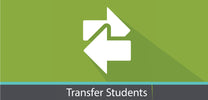
Navigating the complexities of higher education today demands a comprehensive understanding of the challenges and opportunities that lie ahead. One of the most pressing issues many community colleges face is a consistent decline in enrollment, a trend influenced by many factors like labor shortages and the decreasing value many Americans are assigning to higher education. While these challenges are formidable, they are not insurmountable. This blog complements our recent free webinar, "Transforming Enrollment Challenges Into Opportunities: Share & Discuss With Colleagues." hosted by Meg Foster, FYE Instructor, Online Learning and Design Specialist. Meg’s guest is an expert on community college enrollment Dr. Joe Schaffer is the current president of Laramie County Community College and has extensive experience and success in addressing enrollment challenges. Read on to explore strategies that can help institutions grow and innovate to better meet the needs of their students.
Understanding The Decline In Community College Enrollment
One pressing issue that has been persistently faced is the decline in community college enrollment, a trend observed since the Great Recession and not solely attributable to the pandemic. While enrollment surged during the recession's peak as individuals sought higher education for better career opportunities, there has been a continuous drop-off since then, resulting in a loss of approximately two million students over a decade. Factors such as the current labor shortage and talent crunch have led students to prioritize work over education. Additionally, unique pressures on the labor force, including increased wages in specific industries, further discourage potential students from pursuing higher education. Consequently, many students who entirely withdraw or disappear often do so because they are getting more hours or working more. Specific industries like fast food and distribution centers have seen a spike in wages, with some even offering high school graduates starting salaries of $28 to $30 per hour. These dynamics give potential students a powerful incentive to bypass higher education and enter the workforce. But conversely, there is an increasing need for more skilled workers in the labor force. Individuals without higher education may find themselves without the necessary skills to adapt to changing job market demands.
Furthermore, the impact on the high school pipeline and regional disparities is significant in enrollment challenges. Some areas are witnessing a decline in high school graduates, which will impact the availability of college students. Accessibility to higher education becomes a concern for students in regions with limited options. While some regions out west are experiencing growth, other regions like the northeast are seeing a decline in high school-aged students.. This raises concerns about the accessibility of higher education for students in regions with limited options. Additionally, the perception of the value of higher education, particularly in terms of affordability, has caused more people to question its worth. Reports suggest that more people are questioning the value of higher education, which presents another enrollment challenge for institutions across the country.
Strategies For Addressing Enrollment Challenges In The Community College
Dr. Joe Schaffer had strategies and recommendations for institutions looking to address enrollment declines. First, it’s important to guide students to see the meaning in their degree or credential pursuits. Second, institutions need to aggressively ensure that they are collaborating intentionally with the communities of work in their region. The future of higher education will understand students often must work and that work and learning can be intimately connected. Dr. Schaffer also recommended institutions examine promising practices data from organizations like the Community College Survey of Student Engagement. Centering institutional practices around guided pathways, ensuring continuity of care for new and current students, and implementing corequisite models and moving away from developmental education models are other strategies that Dr. Schaffer examines. He also encourages institutions to really examine what is their ideal enrollment size versus focusing on simply increasing enrollment each year. Finally, Dr. Schaffer shared the three trends he thinks will most greatly impact community college enrollment moving forward: dual enrollment programs and specifically the conversion rate of these students, defining the value of an individual’s investment in a community college degree or credential, and investing in a college’s marketing efforts to expand the reach of their messaging regarding their institution’s value.
Navigating The Complex Landscape Of Community College Enrollment Decline
In conclusion, the decline in community college enrollment is a multi-faceted challenge that predates the pandemic and is influenced by various factors, including labor shortages, a talent crunch, and regional disparities. As higher education institutions navigate these challenges, it is crucial to understand the localized context within which each institution operates. Leaning into the research of groups like the Aspen Institute and the Community College Research Center will help guide community colleges into new and improved enrollment spaces.
For nearly 20 years, Innovative Educators has assisted college leaders to build foundations of success for their students. Institutions have seen student engagement and retention increase as a result of utilizing Go2Orientation, OnlineLingo and StudentLingo to onboard new students. Grounded in best practices for online learning, Innovative Educators student support tools are engaging, interactive, and community-building. Go2Orientation, OnlineLingo and StudentLingo together create a powerful online resource center providing support to students throughout their academic journey.
Like To Learn More? Schedule A Demo
By Meg Foster
Online Learning & Design Specialist - Consultant
September 18, 2023
Resources
Will College Enrollment Rebound This Year? At Least 3 Factors Point To Yes
PROOF POINTS: Three views of pandemic learning loss and recovery
How the Pandemic Compounds Education Pipeline Challenges | Knocking
Community colleges double down on dual enrollment



Comments 0